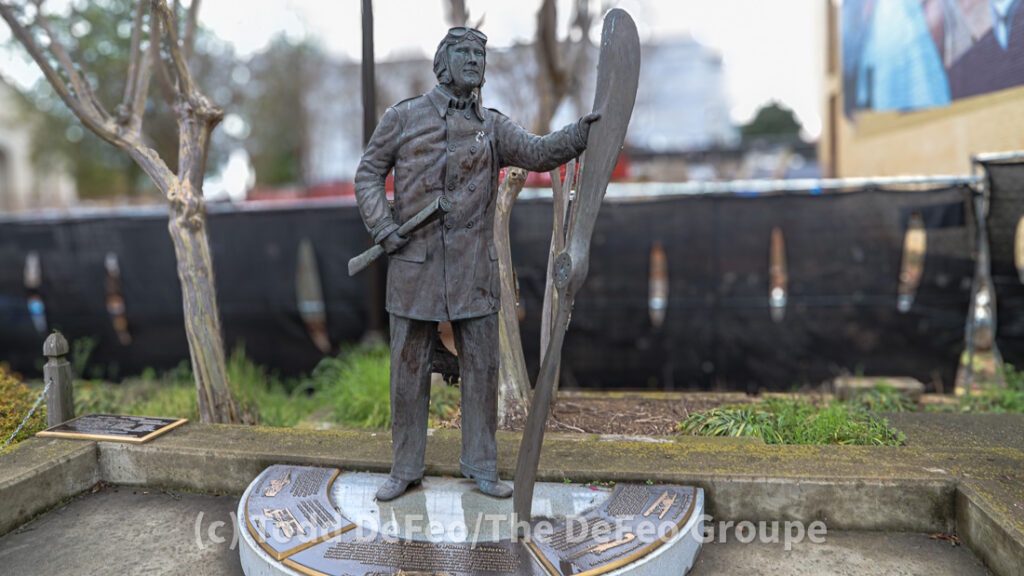ATHENS, Georgia — A statue near the intersection of East Washington and North Lumpkin in downtown Athens honors the man known as Georgia’s first aviator.
While the story of Orville and Wilbur Wright is well-known, Ben Epps, who built and flew aircraft in the early 20th century, may not be as widely known. However, Epps not only earned a place in aviation history alongside pioneers like the Wright brothers, but he also had a lot in common with the Ohio natives.
Epps left Georgia Tech in 1905 to open a bicycle shop in downtown Athens. Like the Wright Brothers, he used his mechanical skills to repair and build bicycles, motorcycles, and early automobiles, but his true passion was flight.
By 1907, Epps had built his first airplane. After an initial failed attempt, he successfully flew the machine roughly 100 yards at an altitude of 40 to 50 feet, making him the first person to fly an airplane in Georgia.
Between 1907 and 1930, Epps designed and built six different aircraft. A replica of Epps’ 1912 Monoplane is displayed at the Museum of Aviation in Warner Robins.
In 1919, he partnered with L.M. “Monte” Rolfe to launch the Rolfe-Epps Flying Service, offering passenger flights, flight instruction, and aerial photography.
Epps also bought, repaired, and sold aircraft, including his 1924 Epps Light Monoplane, a 350-pound plane powered by a two-cylinder motorcycle engine. It could reach speeds of 60 mph.
Epps’s passion for aviation extended to his family. He taught his children to fly, and in 1929, his eldest son, Ben Jr., soloed at just 13 years old. President Herbert Hoover honored Ben Jr. at the White House two years later.
Eight of Epps’s nine children became aviators, including five sons who served as military pilots. His youngest son, E. Patrick Epps, continues the family legacy as president of Epps Aviation at DeKalb-Peachtree Airport in Atlanta.
Tragically, Ben Epps was critically injured in a crash in 1935 and fatally injured in another takeoff crash two years later.
On the fateful day in 1937, Epps was instructing Harold Cagle, a flight student and former Athens High School football star, taking his first flying lesson. The plane took off at a steep angle, faltered, and crashed nose-first into the ground.
Cagle suffered a crushed left ankle, head injuries, and minor cuts and bruises. He was transported to General Hospital in serious condition.
Epps, sadly, suffered a basal skull fracture. He lived for a couple of days after the crash but didn’t regain consciousness. He is buried in Athens’ historic Oconee Hill Cemetery.
“The Athenian was a pioneer in the field of aviation and had done much to forward it in Georgia,” the Athens Banner-Herald reported after his death. “He began flying when airplanes were only a few years old, and devoted a majority of his life’s work to it.
“He was a prominent worker in securing the Athens airport, now one of the best in this part of Georgia,” the newspaper added. “He was a capable instructor, as well as a trusty pilot.”
Epps’ statue stands across from his former East Washington Street garage. A historical marker denotes the location.
